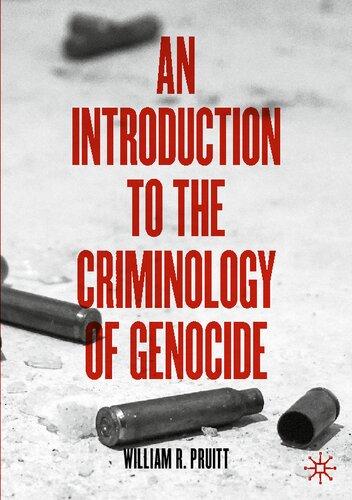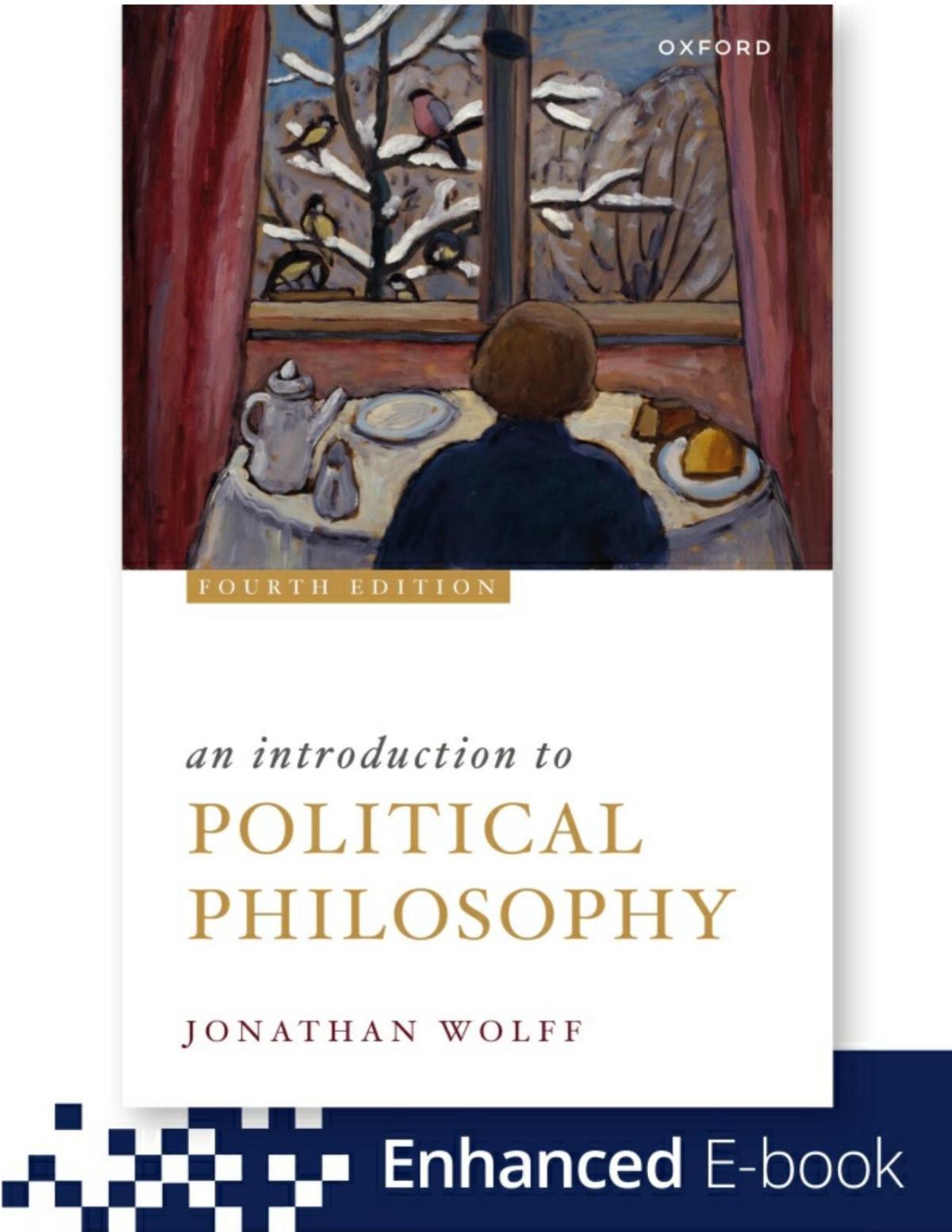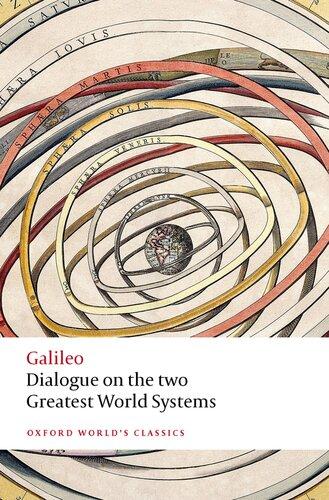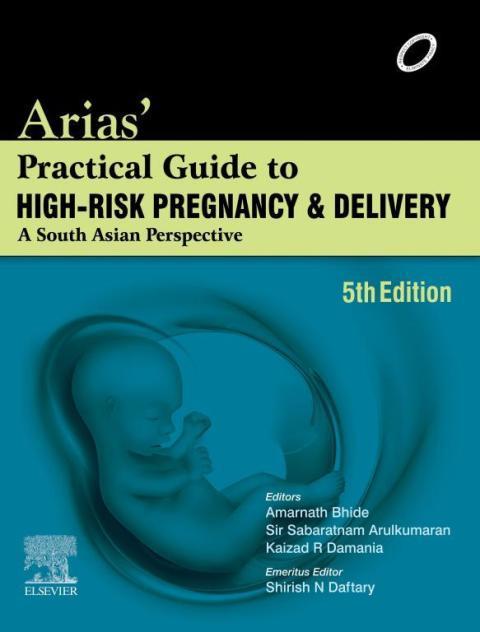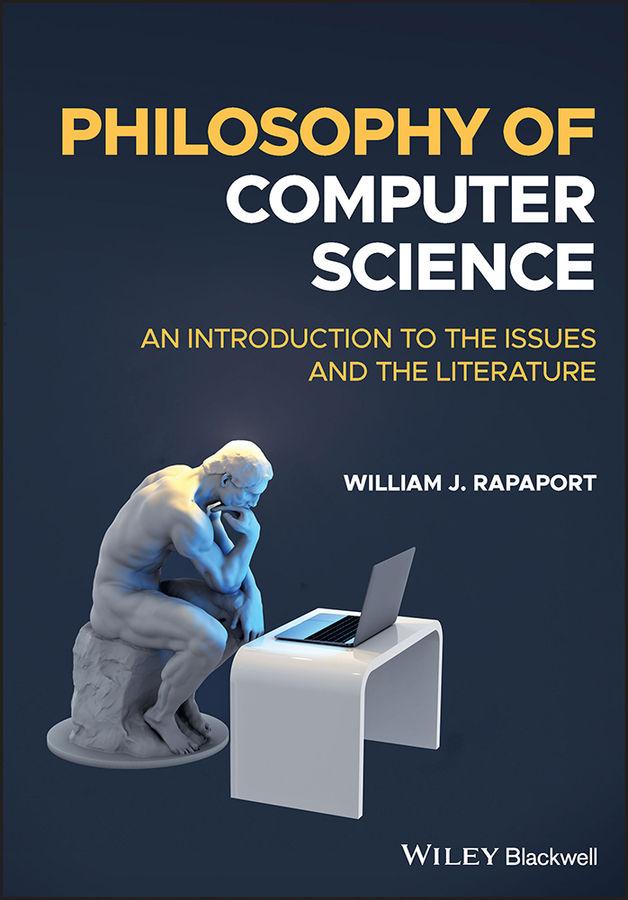Instant digital products (PDF, ePub, MOBI) ready for you
Download now and discover formats that fit your needs...
An Introduction to the Criminology of Genocide William R. Pruitt
https://ebookmass.com/product/an-introduction-to-the-criminology-ofgenocide-william-r-pruitt/
ebookmass.com
An Introduction to the Philosophy of Religion 4th Edition Brian Davies
https://ebookmass.com/product/an-introduction-to-the-philosophy-ofreligion-4th-edition-brian-davies/
ebookmass.com
An Introduction to Political Philosophy Jonathan Wolff
https://ebookmass.com/product/an-introduction-to-political-philosophyjonathan-wolff/
ebookmass.com
Dialogue on the Two Greatest World Systems Galileo
https://ebookmass.com/product/dialogue-on-the-two-greatest-worldsystems-galileo/
ebookmass.com
Arias' Practical Guide to High-Risk Pregnancy and Delivery
5th Edition Glennis Zilm
https://ebookmass.com/product/arias-practical-guide-to-high-riskpregnancy-and-delivery-5th-edition-glennis-zilm/
ebookmass.com
Table of Contents
Cover
Title Page
Copyright
Dedication
List of Figures
Preface
Acknowledgments
About the Companion Website
Part I: Philosophy and Computer Science
1 An Introduction to the Philosophy of Computer Science
1.1 What This Book Is About
1.2 What This Book Is Not About
2 Philosophy: A Personal View
2.1 Introduction
2.2 A Definition of ‘Philosophy’
2.3 What Is Truth?
2.4 Searching for the Truth
2.5 What Is “Rational”?
2.6 Philosophy as a Personal Search
2.7 Philosophies of Anything and Everything
2.8 Philosophy and Computer Science
2.9 Appendix: Argument Analysis and Evaluation Notes
Part II: Computer Science, Computers, and Computation
3 What Is Computer Science?
3.1 Introduction
3.2 Naming the Discipline
3.3 Why Ask What CS Is?
3.4 What Does It Mean to Ask What Something Is?
3.5 CS as the Science of Computers
3.6 CS Studies Algorithms
3.7 Physical Computers vs. Abstract Algorithms
3.8 CS Studies Information
3.9 CS as a Mathematical Science
3.10 CS as a Natural Science of Procedures
3.11 CS as an Empirical Study
3.12 CS as Engineering
3.13 Science xor Engineering?
3.14 CS as “Both”
3.15 CS as “More”
3.16 CS as “Neither”
3.17 Summary
3.18 Questions for the Reader Notes
4 Science 4.1 Introduction
4.2 Science and Non‐Science
4.3 Science as Systematic Study
4.4 The Goals of Science
4.5 Instrumentalism vs. Realism
7 Algorithms and Computability
7.1 Introduction
7.2 Functions and Computation
7.3 ‘Algorithm’ Made Precise8
7.4 Five Great Insights of CS
7.5 Structured Programming31
7.6 Recursive Functions
7.7 Non‐Computable Functions
7.8 Summary
7.9 Questions for the Reader Notes
8 Turing's Analysis of Computation
8.1 Introduction
8.2 Slow and Active Reading
8.3 Title: “The Entscheidungsproblem”
8.4 Paragraph 1
8.5 Paragraph 2
8.6 Section 1, Paragraph 1: “Computing Machines”
8.7 Section 9: “The Extent of the Computable Numbers”
8.8 “Computing Machines”
8.9 Section 2: “Definitions”
8.10 Section 3: “Examples of Computing Machines”
8.11 Section 4: “Abbreviated Tables”
8.12 Section 5: “Enumeration of Computable Sequences”
8.13 Section 6: “The Universal Computing Machine”
8.14 The Rest of Turing's Paper Notes
9 Computers: A Philosophical Perspective
9.1 What Is a Computer?
9.2 Informal Definitions
9.3 Computers, Turing Machines, and Universal Turing Machines
9.4 John Searle's “Pancomputationalism”: Everything Is a Computer
9.5 Patrick Hayes: Computers as Magic Paper
9.6 Gualtiero Piccinini: Computers as Digital String Manipulators
9.7 What Else Might Be a Computer?
9.8 Conclusion
9.9 Questions for the Reader Notes
Part III: The Church‐Turing Computability Thesis
10 Procedures
10.1 Introduction
10.2 The Church‐Turing Computability Thesis
10.3 What Is a Procedure?
10.4 Carol Cleland: Some Effective Procedures Are Not Turing Machines
10.5 Beth Preston: Recipes, Algorithms, and Specifications
10.6 Summary
10.7 Questions for the Reader Notes
11 Hypercomputation
11.1 Introduction
11.2 Generic Computation
11.3 Non‐Euclidean Geometries and “Non‐Turing Computations”
11.4 Hypercomputation
11.5 “Newer Physics” Hypercomputers
11.6 Analog Recurrent Neural Networks
11.7 Objections to Hypercomputation
11.8 Interactive Computation
11.9 Oracle Computation
11.10 Trial‐and‐Error Computation
11.11 Summary
11.12 Questions for the Reader Notes
Part IV: Computer Programs
12 Software and Hardware
12.1 The Nature of Computer Programs
12.2 Programs and Algorithms
12.3 Software, Programs, and Hardware
12.4 Moor: Software Is Changeable
12.5 Suber: Software Is Pattern
12.6 Colburn: Software Is a Concrete Abstraction
12.7 Summary
12.8 Questions for the Reader Notes
13 Implementation
13.1 Introduction
13.2 Implementation as Semantic Interpretation
13.3 Chalmers's Theory of Implementation Notes
14 Computer Programs as Scientific Theories
14.1 Introduction
14.2 Simulations
14.3 Computer Programs Are Theories
14.4 Computer Programs Aren't Theories Notes
15 Computer Programs as Mathematical Objects
15.1 Introduction
15.2 Theorem Verification
15.3 Program Verification
15.4 The Fetzer Controversy
15.5 The Program‐Verification Debate: Summary
15.6 Program Verification, Models, and the World Notes
16 Programs and the World
16.1 Introduction
16.2 Internal vs. External Behavior: Some Examples
16.3 Two Views of Computation
16.4 Inputs, Turing Machines, and Outputs
16.5 Are Programs Teleological?
16.6 Algorithms Do Need a Purpose
16.7 Algorithms Don't Need a Purpose
18.4 Digression: The “Lovelace Objection”
18.5 Digression: Turing on Intelligent Machinery
18.6 The Chinese Room Argument
18.7 The Argument from Biology
18.8 The Argument from Semantics
18.9 Leibniz's Mill and Turing's “Strange Inversion”
18.10 A Better Way
18.11 Questions for Discussion
Notes
19 Computer Ethics II: Should We Build Artificial Intelligences?
19.1 Introduction
19.2 Is AI Possible in Principle?
19.3 What Is a Person?
19.4 Rights
19.5 Responsibilities
19.6 Personal AIs and Morality
19.7 Are We Personal AIs?
19.8 Questions for the Reader
Notes
Part VI: Closing Remarks
20 Computer Science: A Personal View
20.1 Introduction
20.2 Computer Science and Elephants
20.3 Five Central Questions of CS
20.4 Wing's Five Questions
20.5 Conclusion
Notes
Bibliography
Index
End User License Agreement
List of Illustrations
Figure 1 CALVIN AND HOBBES ©2015 Watterson.
Chapter 2
Figure 2.1 How to evaluate an argument from premises ...
Chapter 3
Figure 3.1 Artificial vs. Natural.
Figure 3.2 We're awesome at teaching.
Chapter 4
Figure 4.1 World, Observations, Theory.
Figure 4.2 Fields arranged by purity.
Chapter 5
Figure 5.1 Malpas's engineering method (Malpas, 2000, p. 35).
Chapter 6
Figure 6.1 1892 computer ad.
Chapter 7
Figure 7.1 BABY BLUES ©2004 Baby Blues Bros LLC. Dist....
Figure 7.2 A function “machine” that transforms input into output .
Figure 7.3 A real‐life example of an ambiguous instruction. Whose head shoul...
Chapter 9
Figure 9.1
Chapter 13
Figure 13.1 A pictorial representation of Chalmers's analysis of implementat...
Chapter 15
Figure 15.1 2D photographic model of a real house.
Figure 15.2 Source: From Colburn et al., 1993, p. 283. Reprinted with permis...
Figure 15.3 A cognitive agent looking at a real‐world object that the agent ...
Chapter 16
Figure 16.1 LUANN ©2015 GEC Inc.
Chapter 18
Figure 18.1 Syntax, semantics, and syntactic semantics.
Figure 18.2 How a computational cognitive agent perceives the world.
Figure 18.3 Homunculi from an exhibit at the Buffalo Museum of Science(!).
Chapter 20
Figure 20.1 CALVIN AND HOBBES ©1986 Watterson.
Philosophy of Computer Science
An Introduction to the Issues and the Literature
William J. Rapaport
Department of Computer Science and Engineering
Department of Philosophy, Department of Linguistics and Center for Cognitive Science
University at Buffalo, The State University of New York Buffalo, NY
This edition first published 2023
© 2023 John Wiley & Sons, Inc.
All rights reserved. No part of this publication may be reproduced, stored in a retrieval system, or transmitted, in any form or by any means, electronic, mechanical, photocopying, recording or otherwise, except as permitted by law. Advice on how to obtain permission to reuse material from this title is available at http://www.wiley.com/go/permissions.
The right of William J. Rapaport to be identified as the author of this work has been asserted in accordance with law.
Registered Office
John Wiley & Sons, Inc., 111 River Street, Hoboken, NJ 07030, USA
For details of our global editorial offices, customer services, and more information about Wiley products visit us at www.wiley.com.
Wiley also publishes its books in a variety of electronic formats and by print‐on‐demand. Some content that appears in standard print versions of this book may not be available in other formats
Limit of Liability/Disclaimer of Warranty
While the publisher and authors have used their best efforts in preparing this work, they make no representations or warranties with respect to the accuracy or completeness of the contents of this work and specifically disclaim all warranties, including without limitation any implied warranties of merchantability or fitness for a particular purpose. No warranty may be created or extended by sales representatives, written sales materials or promotional statements for this work. The fact that an organization, website, or product is referred to in this work as a citation and/or potential source of further information does not mean that the publisher and authors endorse the information or services the organization, website, or product may provide or recommendations it may make. This work is sold with the understanding that the publisher is not engaged in rendering professional services. The advice and strategies contained herein may not be suitable for your situation. You should consult with a specialist where appropriate. Further, readers should be aware that websites listed in this work may have changed or disappeared between when this work was written and when it is read. Neither the publisher nor authors shall be liable for any loss of profit or any other commercial damages, including but not limited to special, incidental, consequential, or other damages
Library of Congress Cataloging‐in‐Publication Data
Names: Rapaport,William J., author.
Title: Philosophy of computer science : an introduction to the issues and the literature /William J. Rapaport.
Description: Hoboken, NJ :Wiley-Blackwell, 2023. | Includes
This book is dedicated to my family: Mary, Michael, Sheryl, Makayla, Laura, William, Allyson, Lexie, Rob, and Robert.
List of Figures
Figure 1 What's all the fuss about computers?
Figure 2.1 How to evaluate an argument from premises and to conclusion .
Figure 3.1 Artificial vs. Natural.
Figure 3.2 We're awesome at teaching.
Figure 4.1 World, Observations, Theory.
Figure 4.2 Purity.
Figure 5.1 Malpas's engineering method.
Figure 6.1 1892 computer ad.
Figure 7.1 Snowman algorithm
Figure 7.2 A function “machine” that transforms input into output .
Figure 7.3 A real‐life example of an ambiguous instruction.
Figure 9.1 Abstruse Goose, The Ultimate.
Figure 13.1 A pictorial representation of Chalmers's analysis of implementation.
Figure 15.1 2D photographic model of a real house.
Figure 15.2 B.C. Smith's figure.
Figure 15.3 A cognitive agent.
Figure 16.1 1 = Yes; 2 = No.
Figure 18.1 Syntax, semantics, and syntactic semantics.
Figure 18.2 How a computational cognitive agent perceives the world.
Figure 18.3 Homunculi from an exhibit at the Buffalo Museum of Science(!).
Figure 20.1 Toaster computer.
Note
1 “Clicking on the first link in the main text of an English Wikipedia article, and then repeating the process for subsequent articles, usually leads to the Philosophy article. In February 2016, this was true for 97% of all articles in Wikipedia, an increase from 94.52% in 2011” (“Wikipedia:Getting to Philosophy,” http://en.wikipedia.org/wiki/Wikipedia:Getting_to_P hilosophy).
On 9 August 2021, if you began with “Computer Science,” you would end with “Philosophy” in 11 links: computer science algorithm mathematics quantity counting number mathematical object concept abstraction rule of inference philosophy of logic philosophy.
Web‐only items (or other hard‐to‐find items) were accurate at the time of writing. Some, however, will change or disappear. Documents that have disappeared can sometimes be found at the Internet Archive's Wayback Machine (https://archive.org/web/). Some documents with no public URLs may eventually gain them. And, of course, readers should search the Internet or Wikipedia for any unfamiliar term or concept.
Sidebars: Sprinkled throughout the book are sidebars in boxes, like this one. Some are Digressions that clarify or elaborate on various aspects of the text. Some are suggestions for Further Reading. Others are Questions for the reader to consider at that point in the text. Additional suggested readings, along with student assignments and an instructor's manual, are in the Online Resources.
Reprinted with permission of ANDREWS MCMEEL SYNDICATION. All rights reserved
Figure 1 CALVIN AND HOBBES ©2015 Watterson.
Acknowledgments
For comments on, suggestions for, or corrections to earlier versions, my thanks go especially to
Peter Boltuc, Jonathan Bona, Selmer Bringsjord, Jin‐Yi Cai, Timothy Daly, Edgar Daylight, Peter Denning, Eric Dietrich, William D. Duncan, J. Michael Dunn, Frank Fedele, Albert Goldfain, James Graham Maw, Carl Hewitt, Robin K. Hill, Johan Lammens, Cliff Landesman, Nelson Pole, Thomas M. Powers, Michael I. Rapaport, Stuart C. Shapiro, Aaron Sloman, Mark Staples, Matti Tedre, and Victoria G. Traube; as well as to Russ Abbott, Khaled Alshammari, S.V. Anbazhagan, S. Champailler, Arnaud Debec, Roger Derham, Gabriel Dulac‐Arnold, Mike Ferguson, Pablo Godoy, David Miguel Gray, Nurbay Irmak, Patrick McComb, Cristina Murta, Alexander Oblovatnyi, oleg@okmij.org, Andres Rosa, Richard M. Rubin, Seth David Schoen, Stephen Selesnick, Dean Waters, Nick Wiggershaus, and Sen Zhang; and the University at Buffalo Department of Computer Science Information Technology staff for help with LaTex; and my editors at Wiley: Will Croft, Rosie Hayden, and Tiffany Taylor.
